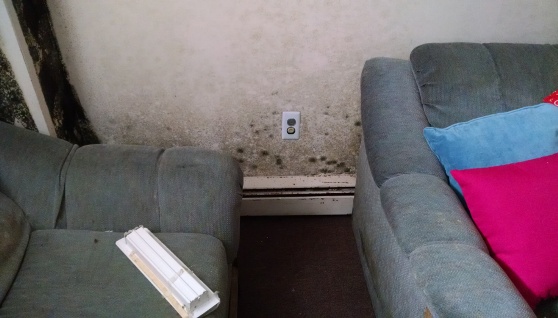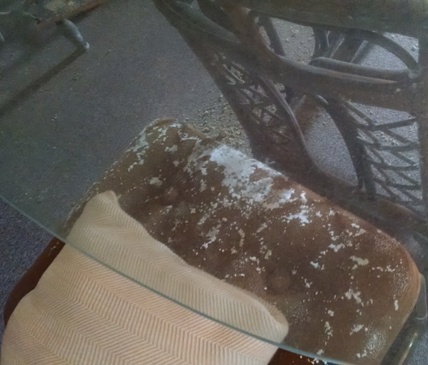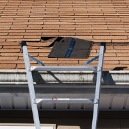Find a pre-screened local mold removal specialist Free Estimate
Find a Mold Specialist Now
Click or Call, Toll-Free 24/7
Furniture Mold Removal
Moldy furniture can sometimes be cleaned and saved. This article covers cleaning guidelines for wood and upholstered furniture. If mold is observed growing into the surface of the material and cannot be cleaned off, then the item may have to be disposed of. When in doubt, throw it out.
A high quality piece of furniture is an often considered a long-term investment. Because we expect our furniture to last, we take time selecting the right décor to match our homes and our design preferences - modern or traditional. However, even with proper care, furniture may start to show its age and require freshening up. When your favorite chair or sofa no longer looks it best, or begins to take on a musty odor, there are steps you can take to restore it to good condition.
Furniture Care and Maintenance
Often, we don’t think much about furniture care. Wood furniture is usually easy to maintain with simple dusting. For upholstered furniture, you can use a light vacuum to remove surface dirt and debris from most fabrics. Most manufacturers provide care and maintenance instructions on furniture tags, or you can check their websites.
To keep your furniture looking its best, be aware of placement within your home. Prolonged, direct sunlight can cause fading of both wood and fabrics. If something is spilled onto your furniture, clean the surface as soon as possible to avoid a permanent stain. Upholstered fabrics will have a tag with a cleaning code that details what types of detergents can safely be applied to the furniture to assist with stain removal.
Furniture Mold Removal
Even if your wood or upholstered furniture is stained or suffers water damage, perhaps caused by a leak in your home, you may be able to salvage some or all of it. If you suspect a stain or odor is due to mold damage, extra care should be taken to restore your furniture.
The first step is to ensure that you take care of whatever leak or environmental condition is causing the mold to grow indoors. Mold tends to thrive in damp areas of your home, like basements or bathrooms. Sometimes unforeseen events such as flooding or pipe leaks can cause water to reach furniture in other rooms and cause damage. If any of your living areas are prone to dampness, you may want to use a dehumidifier to prevent mold growth. According to Energystar, indoor humidity levels between 30 - 50% are ideal.
Once you’ve identified and corrected the reason for the mold damage, you can attempt to clean your furniture. If the furniture is still wet, it should be given time to dry out before you try to remove mold. You may want to place it outside, in the sun to help speed this process.
After the furniture is thoroughly dried, you can begin to clean it. When cleaning furniture affected by mold, you should wear protective gear, such as work gloves, safety glasses and a respirator. If you’re affected by asthma or mold allergies, call a professional to remove mold in your home. Any kind of furniture mold removal should be done in an area with proper ventilation, or even outdoors, to avoid breathing in mold spores.
 Moldy furniture and walls
Moldy furniture and wallsUpholstered Furnishings
If your upholstered furniture (sofas, chairs, pillows, etc.) is thoroughly saturated, the fabrics should be disposed of. In some instances, you may be able to keep the frame. In situations where water infiltration was limited to the surface, and the piece has thoroughly dried out, you can try to clean the fabrics by first using a HEPA vacuum over the surface of the chair or sofa. Always check furniture tags for cleaning instructions and only use cleaning products recommended for the specific fabric. If you’re unable to remove the mold from the upholstered fabric, you can try to save the wood frame and have the piece professionally reupholstered. However, if you have any concerns over mold growth, it’s best to consult a professional mold remediation expert for their opinion.
Wood / Glass Furniture Mold
Wood and glass furniture, including cabinets or table tops, may also be affected by dampness and mold. In the e-book A Homeowner’s Guide to Mold Remediation, author and mold remediation expert Brian Turner recommends cleaning mold from non-porous furniture using first a HEPA vacuum, then a damp wipe with a low-toxicity cleaning product. Consult the furniture manufacturer’s recommendations for cleaning products to use. If surface cleaning does not appear to remove the mold, or signs of mold return, then further steps should be taken, including sanding and refinishing the wood. Generally speaking, sanding of wood affected by mold should only be done by professionals, as the mold spores may release into the air and disperse around the house. If after refinishing or repainting you have not returned your furniture to its previous appearance, you may want to talk to a professional furniture restoration service or a mold remediation expert. If the mold damage is too deep, you may need to consider disposing of the item.
For Help with Furniture Mold Removal in Your Home
If your home has suffered damage from a leak or flood, it’s important to check all indoor furnishings and fixtures for signs of mold damage. When not treated properly, mold can cause pervasive damage to your home. The presence of mold can also lead to health issues for occupants. The very young and old, and those with a compromised immune system, are especially at risk. A lingering, musty odor, or stains on ceilings, walls or furniture may be a sign of mold.
If you suspect mold growth in your home, you can schedule a free professional inspection. A mold inspector will be able to determine if the furniture can be salvaged, as well as let you know what else needs to be done if there is mold elsewhere in the home. You can search for mold specialists in your area that provide free home inspections by following the link.
Return From Furniture Mold Removal To Our What To Do About Mold Page
Free Home Inspection By A Mold Removal Specialist
Search This Website
 White mold on chair cushion
White mold on chair cushionRecent Articles
-
See Our 5 Recommended Mold Removal Companies in Covington, KY
Apr 16, 25 12:59 PM
-
See Our 5 Recommended Mold Removal Companies in Wheaton, IL
Jun 20, 24 10:33 AM
-
See Our 5 Recommended Mold Removal Companies in Aberdeen, SD
Oct 08, 21 04:05 PM




